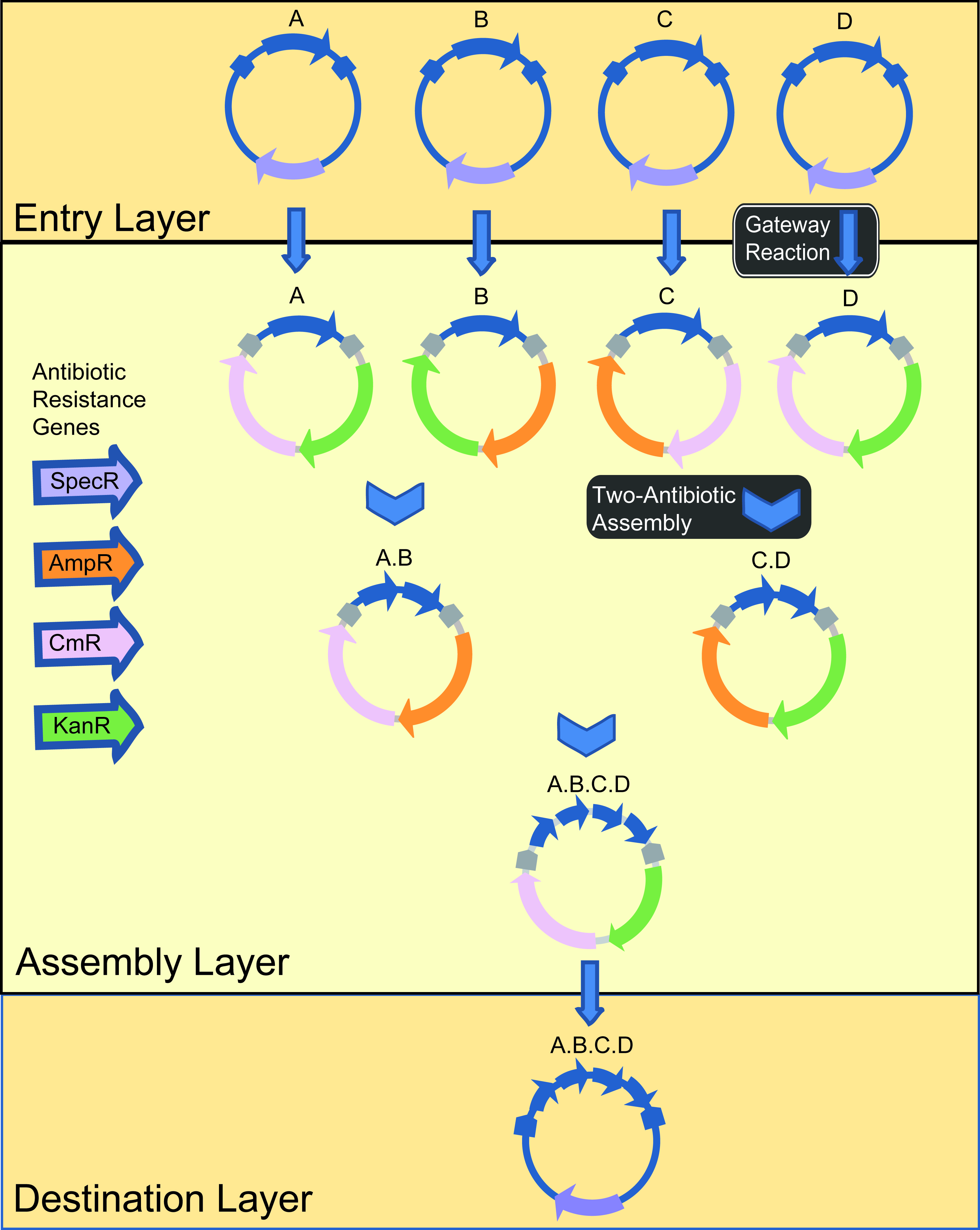Team:Berkeley Wetlab/Automation
Contents |
Why Automate?
Our approach to characterizing cell surface display required us to make a lot of parts. Without an automated mode of assembly it would not be possible for us to make enough parts to characterize cell surface display using a combinatorial method.
Making Basic Parts
Making basic parts is the first step toward making any synthetic biology device. After designing all of the basic parts we needed for our cell surface display project, our team developed a method for doing cheap in-house gene synthesis. This method allowed us to easily make a very large number of basic parts.
(basic parts making cartoon)
oligoDesigner
We created a software called oligoDesigner to facilitate gene synthesis. OligoDesigner will take a list of goal part sequences as input and output all of the oligo nucleotides needed to synthesize the goal part.
OligoDesigner will also output an IDT ([http://www.idtdna.com/Home/Home.aspx Integrated DNA Technologies]) order form that will order all of the oligo nucleotides it designed.
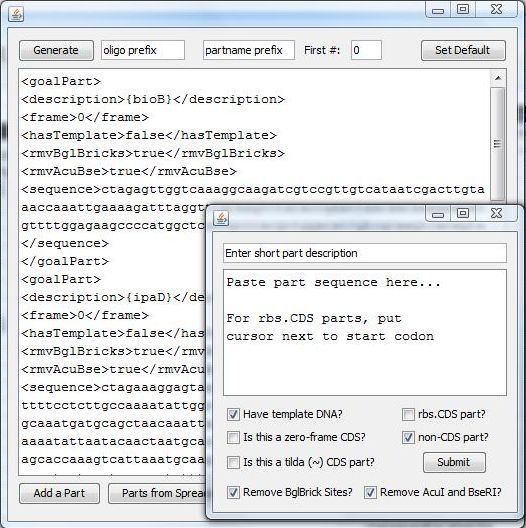 oligoDesigner | 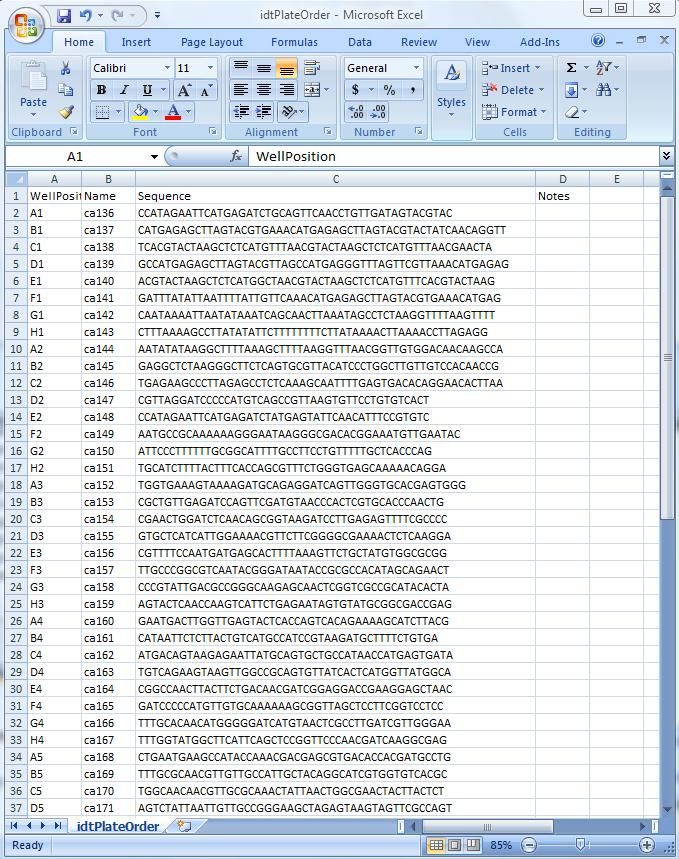 IDT Ordering Form |
The oligo nucleotides arrive from IDT in a 96 well plate format.
(IDT 96 well plate image)
OligoDesigner will then generate commands for a liquid handling robot to resuspend the oligo nucleotides to the correct concentrations. It will also generate commands that tell the liquid handling robot how to mix the oligos in order to get the correct PCR products.
After the liquid handling robot finishes mixing oligo nucleotides, all we need to do is add the correct buffers and enzymes and put the resultant tubes in a thermocycler for PCR.
Making Composite Parts
The next step, after making new basic parts, is to assemble those basic parts into composite part devices. There has been a lot of work being done at UC Berkeley to automate the process of composite part assembly. We were able to implement many newly developed techniques to create a large number of composite parts.
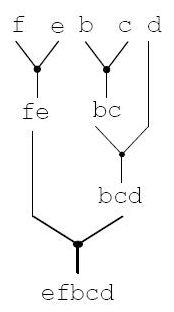
Two AntiBiotic Assembly
Clonebots
- 2008 Berkeley Wetlab team
Clotho
- liquid handling robots
Success!
Using our newly developed automated assembly processes we were able to make over 800 parts (both basic and composite) in one summer! This magnitude of part making is unprecedented in iGEM competitions and enabled us to test a very large number of variations on cell surface display systems.
Success Rates
The assembly scheme we developed works just as well as assembly by hand and is much faster.
- percentages
- see Jenn Brophy and Gabriella Guzman's notebooks for notes on assembly.
- 2ab assembly
- Clotho
- statistics
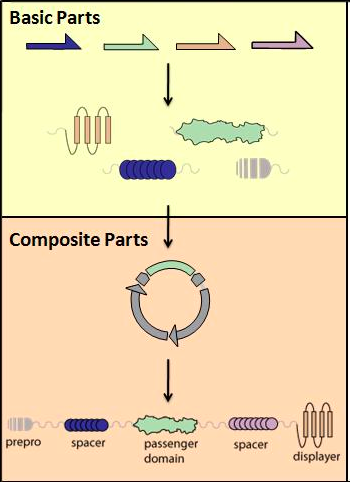 We made a lot of parts with a robot.
We made a lot of parts with a robot.
 "
"







